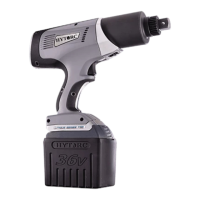9
BATTERY RECYCLING
Do not ship batteries if they can be disposed of or recycled locally. All defective, damaged or spent batteries should be
disposed of or recycled properly according to these guidelines.
• Dispose of Properly: Li-Ion battery packs should not be disposed of in the household (municipal) waste stream;
they must be taken to an authorized waste collection center or battery recycling center
• Protect the Environment: Drop o your old batteries at a local recycling center near you
TEST THE BATTERY
The Lithium-Ion battery has a long run life and will power
the tool at full speed until the battery is depleted, so there
is no gradual drop in power during use
• For continuous use, have one or more spare battery
packs charging while the tool is in use. When needed,
simply swap batteries from the charger to the tool.
• Batteries can be charged hundreds of times without
any noticeable loss in capacity
• Push the TEST button on the side of the battery and
the LED’s will provide an approximate indicator of
remaining battery life
1 LED ON < 25% Battery Charge Left
2 LEDs ON < 50% Battery Charge Left
3 LEDs ON < 75% Battery Charge Left
4 LEDs ON < 100% Battery Charge Left
INSTALL THE BATTERY
The battery easily slides onto the tool body and snaps
into place
• Press the release button on the battery and slide
battery pack o the charger
• Align the base of the tool with the rails in the
battery and slide the battery pack firmly into the
handle until you hear (or see) the lock snap in place
• To remove the battery pack from the tool, press the
release button on the battery and firmly pull the
battery pack out of the tool
NOTE: When not in use, remove the battery pack from
the tool
Battery Release
Button
(CONT’D.)

